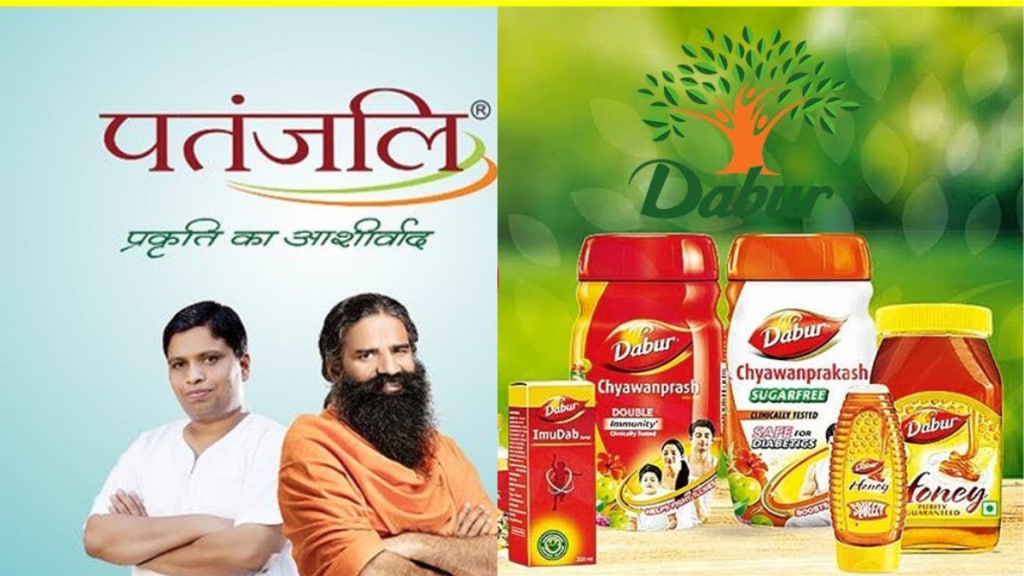Advertising battles are not new in India, but when two Ayurvedic giants lock horns over their star product, it captures attention. Dabur India and Patanjali Ayurveda are embroiled in a legal fight over an advertisement for chyawanprash. Dabur claims Patanjali’s ad spreads misleading information, crossing the line from fair competition to brand tarnishing. The case has brought up important questions about what counts as fair play in advertising and what crosses into murkier territory. This is not the first time that Patanjali has been under the radar for its misleading claims and advertisements.
Why are they fighting?
At the core of the issue is an advertisement by Patanjali that Dabur says misrepresents its chyawanprash. Patanjali claims its product contains 51 herbs and hints that Dabur’s version has only 40 herbs, which Dabur says is false. Adding fuel to the fire, the ad allegedly suggests Dabur’s chyawanprash contains mercury, indirectly labelling it unsafe for children. Dabur argues this not only damages its reputation but also erodes the trust consumers have built over decades.
On the other hand, Patanjali says its ad does nothing wrong. The company calls it puffery—a standard advertising tactic where brands brag about their own products without targeting rivals. Patanjali insists it didn’t name Dabur or directly compare products, arguing the claims are just promotional and based on publicly available information, such as product labels.
The bigger picture
This isn’t just about two brands squabbling. It’s also about how far companies can go when promoting their products. In the competitive FMCG (Fast Moving Consumer Goods) market, brands often walk a fine line between creative advertising and outright disparagement.
As reported by Live Law, Patanjali’s defence leans on a legal precedent from the Havells India Ltd. vs. Amritanshu Trehan case. In that case, the Delhi High Court ruled that brands can compare their products with others as long as they’re honest and avoid defaming competitors. However, claims that mislead consumers are not allowed. Patanjali argues it has followed these rules, framing its ad as competitive but fair.
What happened in court?
The Delhi High Court, led by Justice Mini Pushkarna, recently reviewed the advertisement in question. Dabur argued that the ad subtly discredits its product, casting doubt on its quality and safety without directly naming it. Patanjali countered that any connection to Dabur’s product is purely coincidental and the ad sticks to promoting its own product.
The court hasn’t made a decision yet, leaving both companies and industry watchers on edge.
Why this matters
This case isn’t just about who sells more chyawanprash—it could set a standard for what’s acceptable in Indian advertising. If the court rules against Patanjali, brands may have to rethink how they position themselves against competitors, especially in indirect comparisons. On the flip side, if Patanjali’s defence holds up, it could embolden companies to be bolder in their advertising tactics.
There’s also the question of consumer trust. Claims about safety can have a lasting impact, even if they’re eventually dismissed. For a sector like Ayurveda, which relies heavily on consumer faith in traditional remedies, the stakes are even higher.
Observing the clash
This legal battle reflects a clash of philosophies. Dabur, with its century-old legacy, banks on trust and tradition to maintain its market position. Patanjali, a relative newcomer, relies on aggressive marketing and its ‘swadeshi’ appeal to disrupt the market. The courtroom has become the stage for these two strategies to collide.
While the case unfolds, the takeaway for the broader industry is clear: competitive advertising might be fair game, but when it comes to bending facts, brands better tread carefully. After all, what happens in this courtroom could influence how far Indian companies can push their ads before they’re forced to pull them back.
